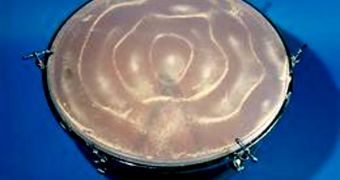Experts have for the first time ever been able to develop so-called lasers with a twist, which are capable of emitting sounds rather than light. The system is based on very small drum heads, and a number of vibrating towers, which allow scientists to fulfill this goal. Laser stands for light amplification by stimulated emission of radiation, but through the new effort a team managed to replace the light part with sound. Some research groups have dubbed the new devices “sasers,” arguing that this is a more precise abbreviation, Nature News reports.
This is an emerging field of research, but work conducted in it has garnered a great deal of attention from the international scientific community. It has a wide variety of practical applications, ranging from creating faster electronic devices to developing more accurate ultrasounds imaging technologies. Oddly enough, the idea for such devices is not at all new. In fact, it has been around ever since the first laser was demonstrated in practice, but thus far no one has been able to construct a working prototype. Details of how this was finally achieved appear in the latest issue of the respected scientific journal Physical Review Letters.
The basic principle underlying laser operations is that a particular frequency, or color, in a light beam is amplified. The way this is achieved is by using two reflective mirrors inside the device that are set at a very specific distance away from each other. This distance determines the frequency on which the light will receive amplification, and so it needs to be selected very carefully. This empty space is filled with certain gases that accelerate the light as it bounces back and forth between the two reflective surfaces. The end result is a “coherent” light beam, in which all photons have the same color and frequency.
While the mathematical equations for the wavelengths of light and sounds are strikingly similar, the issue is that sounds tend to have a shorter wavelength than light over the same distance. This is useful for gathering impressive levels of details from nanoscale samples, for example, where light begins to suffer from the diffraction limit, but it also makes sasers tremendously difficult to construct. All of these obstacles are cased by the fact that sounds travel slower than light. But researchers at the California Institute of Technology (Caltech), in Pasadena, managed to crack this complex problem.
Led by physicist Kerry Vahala, the investigators created two silica drums just tens of micrometers in diameter. They then used lasers as drivers, and made them “run” across the rims of the drum heads. This naturally caused the drums to vibrate at certain frequencies. When the entire system crossed a certain threshold, the researchers noticed that the drum heads began emitting a pure tone. By regulating the distance between the silica drums, they were able to tune the frequency that was amplified. Hence, the first working saser was produced.

 14 DAY TRIAL //
14 DAY TRIAL //